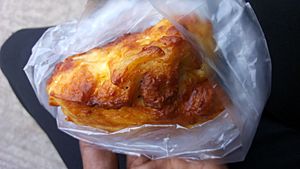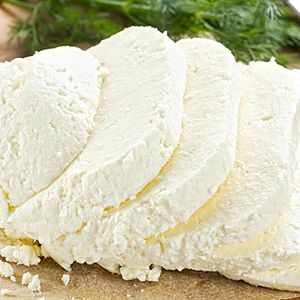Wagasi facts for kids
Wagasi is a special kind of cheese from West Africa. It's made from cow's milk. The Fulani people often make this cheese, especially in Northern Benin. You can find a lot of Wagasi sold in Parakou, a city in Central Benin. It's also popular in other West African countries, especially in the savanna areas around Parakou.
People call Wagasi by different names depending on the language. In Zarma-Songhai and Dendi languages, it's called wagasi. In the Fon language, it's amo. The Nagot language calls it wara, and in Bariba, it's gasaru. In French, it's simply called fromage. In Ghana, it's also widely known as wagashi, which likely comes from the Zarma-Songhai word.
Wagasi is usually soft and has a mild taste. It's often used in cooking. Like many foods in Benin that come from animals, Wagasi is usually cooked and served in a sauce. This sauce is then eaten with starchy foods like pounded yams or pâte. Pâte is a thick 'porridge' made from millet or maize, which is a main food in the area. In English-speaking areas, it's sometimes called tuwo or t.z. (short for tuwon zafi, meaning 'hot porridge' in Hausa).
How Wagasi Is Made
Making Wagasi starts with warming up cow's milk.
- First, the warm milk is stirred with a leaf from a "fromagier" plant, like the Bombax ceiba tree, or another sour substance.
- This makes the milk curdle, meaning it separates into solid parts (curds) and liquid.
- Next, the curds are taken out and pressed into round shapes, like small cheese wheels.
- Finally, these cheese wheels are dipped into a red wax. This wax is made from another type of leaf and helps keep the cheese fresh for longer.
Cooking with Wagasi
You can cook Wagasi in many ways, such as frying or boiling it. It's often used in stews as a replacement for fish or meat. If you're traveling, you might find Wagasi sold already fried, sometimes with pepper for dipping.



